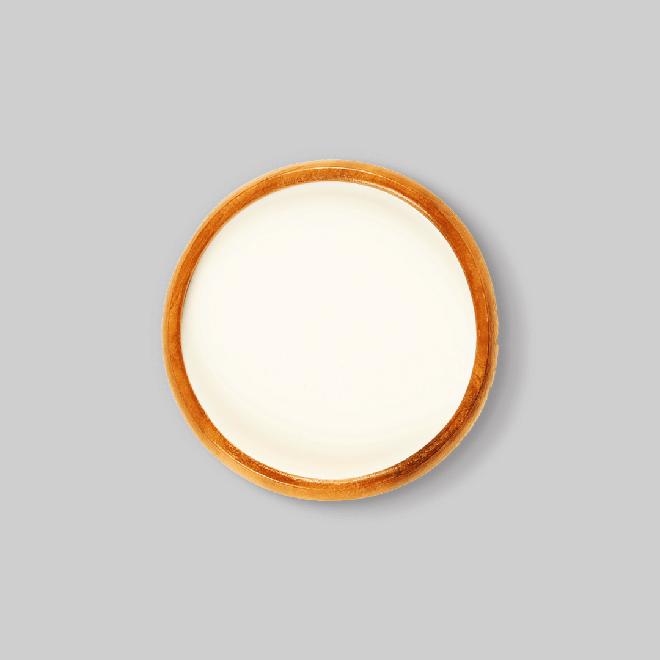Buttermilk




Buttermilk is a cultured dairy drink with a slightly sour and tangy taste. It is traditionally made by churning cream into butter and then removing the butterfat. This leaves behind a liquid that is rich in lactic acid, which gives buttermilk its characteristic flavor. Today, buttermilk is made by adding live cultures to regular milk.
While buttermilk holds a versatile crown in the kitchen, its most common uses boil down to two main roles: leavening agent and flavor enhancer. It shines in baked goods like biscuits, pancakes, muffins, and even some cakes and can add depth and complexity to creamy soups like potato or butternut squash, salad dressings like ranch, and dips like sour cream.
Buying buttermilk depends on the type you need. Cultured buttermilk works best for baking, while acidified buttermilk can be used for both baking and cooking. Soy, almond, or coconut milk-based buttermilk substitutes are available for dietary restrictions. They vary in thickness and flavor, so read the label carefully.
Buttermilk should be stored in the refrigerator at 40°F (4°C) or below. This will help to slow down the growth of bacteria and extend the shelf life of the buttermilk. It should be kept in a tightly sealed container and used within 1-2 weeks after opening.
Buttermilk's lactic acid is a natural exfoliant, helping shed dead skin cells and leaving your scalp feeling refreshed and clean. Mix it with honey or aloe vera for a nourishing hair mask.
Its gentle lactic acid also works wonders on the skin! Create a soothing and hydrating face mask by mixing buttermilk with honey or oats. Leave it on for 15 minutes and rinse for a healthy, glowing complexion.
Cultured buttermilk can be the starting point for homemade cheeses like ricotta or paneer. Explore online tutorials and impress your friends with your cheese-making skills!
There are two types of buttermilk: cultured buttermilk and acidified buttermilk. Cultured buttermilk is made by adding lactic acid bacteria to milk, while acidified buttermilk is made by adding an acid, such as lemon juice or vinegar, to milk. Cultured buttermilk has a more tangy flavor than acidified buttermilk.
The first recorded recipe for buttermilk was found in a Sumerian tablet dating back to 3,000 BC. Throughout history, buttermilk became ingrained in various cultures across the globe, taking on regional twists and names.
Did you know that buttermilk is the official state beverage of Tennessee?
You can make your own buttermilk at home easily. Just add 1 tablespoon of vinegar or lemon juice to 1 cup of milk, then stir and leave at room temperature for about 15 minutes. Once ready, you can use it immediately or store it in the fridge for up to 1 week.
When baking with acidified buttermilk, be sure to reduce the amount of baking powder or baking soda by half. Too much baking powder or baking soda can make your baked goods bitter and tough.
Marinate meats like steak or chicken in buttermilk before grilling or roasting. The lactic acid breaks down tough protein fibers, resulting in a melt-in-your-mouth texture.
Cultured buttermilk boasts live bacteria cultures, acting as a probiotic source that aids digestion and promotes gut health. Both cultured and acidified buttermilk are good sources of calcium and vitamin D, crucial for strong bones and teeth.
Compared to regular milk, buttermilk generally has lower fat content and fewer calories, making it a lighter option for health-conscious individuals. Buttermilk can be a good source of electrolytes like potassium and sodium, helping replenish those lost through sweating or exercise.
Corrections or improvements? Email us at
content@sidechef.com